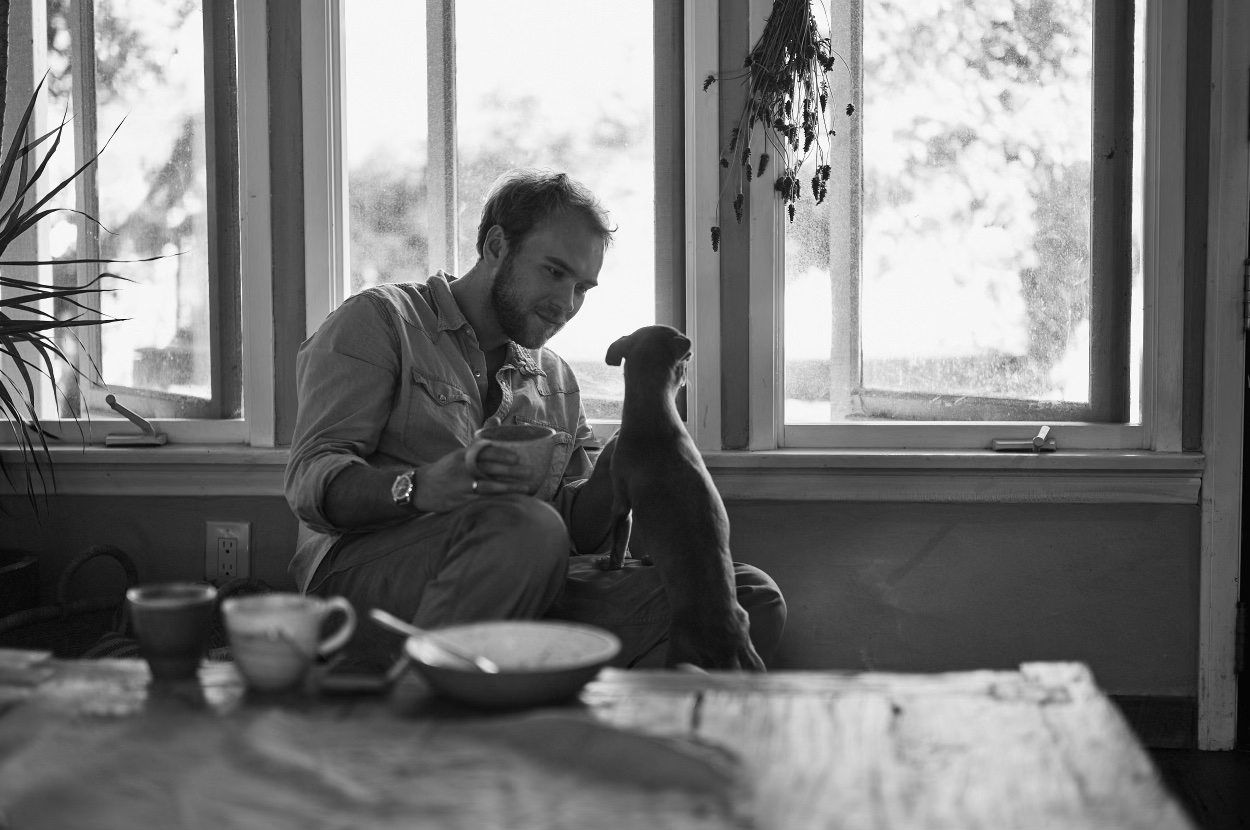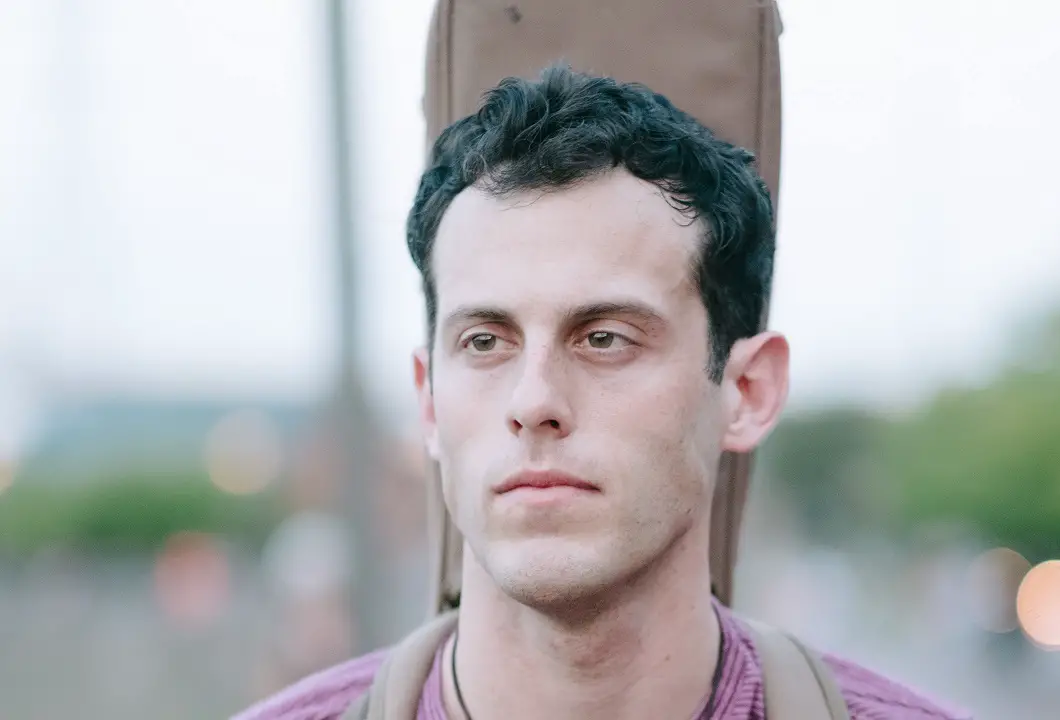For his fourth album ‘Annie’s House,’ singer/songwriter William Harries Graham recounts snippets of everyday life, blurring the real and the fictionalized in a way that’s still relatable.
‘Annie’s House’ – William Harries Graham
In some ways Annie is a real person (or a set of real people), but really Annie is something more than that; she’s the way I view life and experience.
For his fourth album Annie’s House, singer/songwriter William Harries Graham delves into memories, anecdotes and random snippets of conversation that have rested in the head.
Following on from the singles “Ohio State,” “On the Outside” and “Philadelphia,” released over the past few months, Annie’s House seemingly recounts snippets of everyday life, blurring the real and the fictionalized in a way that’s still relatable.

“Annie is kind of a real person, in the sense that they were inspired by different people in each song. Ultimately, Annie is a character amalgamation of various people I know and experiences I’ve had,” explains William Harries Graham in regard to the main personage of the album. “In writing Annie’s House, I knew I wanted to write more personally than I had in previous albums. I wanted to pull more from my life, and Annie allowed me to do that without referencing specific people.”
We become accustomed to Annie through the everyday situations, such as ‘Annie sits on the kitchen table, spouting her theories of romance/ Me, I’m out on the front porch talking shit about all of my friends in band’ (“Yourself”), and the questions posed directly at her: ‘Yeah, but Annie, are you there? Did you fall asleep aware?’ (“Annie, Are You There?”) And ‘Yeah, well Annie, would you sing me a song?/ Well, I know that you don’t sing that much’ (“Philadelphia”)
Yeah well, Annie, are you there?
Did you fall asleep on the other line?
Did you wake up with night frights?
Why did you leave the kitchen light on?
And I keep my distance
And I wish that I had wished this away
Some things you just can’t
get away with these days
But tonight, I wish we had taken the jump
We could have given up on,
given up on giving up
– “Annie, Are You There?” William Harries Graham

Questions are a common feature in the lyrics to Annie’s House, whether it be self-pondering or engaging with others. Sometimes it’s as though Graham is seeking the answers from those close to him and other times it’s as though he’s rifling through his thoughts for a response. ‘You’re not living with yourself, you’re just living with a memory/ When you look in the mirror, tell me what do you see? Someone staring back at you’ he ponders in the opening track, introducing the concept of identity and memories with the reflective rush of guitars. In “Brooklyn,” melancholic and dreamy with an increase in pace before the chorus, a scene of New York City apartments then transitions into being out on the road seeking answers. ‘So I’ll drive around LA all night/ Trying to find who I am/ Can someone tell me who the hell I am?’
“Early in my career, I focused more on grand stories and vague narratives in my songs, allowing them to wash over people. Over time, I became enamored with the beauty of everyday life. We so frequently forget to appreciate those everyday moments of joy when they happen; we only really appreciate them in retrospect. This idea of a snapshot is central to Annie’s House,” William Harries Graham tells us of his writing style.
“If you think back on a relationship, it’s a period of time- sometimes a long period of time- but you probably recall a handful of moments that encapsulate it. I really wanted to explore the details of those scenes in all aspects of my life. I don’t typically jot down ideas as they happen, but I do collect a lot of voice memos, and those eventually evolve into songs.”

Sonically, Annie’s House is reflective and easy-going.
“Maybe That’s The Way” is twinkling and soft, a lullaby recounting the intimacies of an uncertain relationship, and “Galway Coast” contains a folky dreaminess and plucks of guitar that resemble calming waves at a beach.
There are songs like “Ohio State,” “Philadelphia,” and “Yourself” with intensified guitars, adding more energy and drama to the anecdotes, while “On the Outside” encompasses all of the approaches on the album.
George and Steve, can we go downtown?
I’ve been talking to myself again
Juliette says that I’m still messed up
but she loves me just the same
So we fall asleep, in the back of taxi cabs,
on the back of the A Train
Fall in love with the city life,
it’s the only one where I don’t feel pain
– “George and Steve,” William Harries Graham
“The series of EPs I worked on during the pandemic shifted my focus toward more specific ideas. I started writing songs with themes that bled into one another, revisiting scenes,” William Harries Graham tells us in regard to how Annie’s House compares to his previous albums.
“That approach inspired much of this album, and it differs from my earlier work in that way. Sonically, this album is also a complete departure. There was no acoustic guitar on my first two albums—they were all electric guitar, bass, and drums. This new approach to songwriting led me to use almost all acoustic guitar for the rhythm on this record. I was really inspired by early Wilco albums, which were total rock albums but had acoustic guitar all over them. That allowed me to embrace a delicacy in my writing that I hadn’t before.”

This delicacy can also be found in the album’s themes.
Closely revisiting our memories and analyzing what could have been can be a fragile thing, especially as we become older. In the closing track, “Same As When We Were Kids,” which is melancholic and slow with a hint of darkness, he admits: ‘Annie, can I sleep on the floor tonight?/ Because I just can’t make it to bed I’m/ still having night sweats/ The same as when we were kids.’ The dialogues and musings found within the songs are those that search for guidance and reassurance. A realness that suggests that we’re never alone, even in moments when we feel like we’re only interacting with ourselves.
Experience the full record via our below stream, and peek inside William Harries Graham’s Annie’s House with Atwood Magazine as he takes us track-by-track through the music and lyrics of his fourth album!
— —
:: stream/purchase Annie’s House here ::
:: connect with William Harries Graham here ::
— —
‘Annie’s House’ – William Harries Graham
:: Inside Annie’s House ::

— —
Yourself
“Yourself” is really a series of scenes, that’s how I imagined it. It originally stemmed from vivid imagery, things like broken records or fog lights. Things that immediately had a tangibility to me. It was also one of the songs where I really embraced the character of Annie. I’d had most of the song for a while, but the beginning of the second verse never quite felt right. Once I’d used the character of Annie in a few other songs, the image of her sitting on the kitchen counter just came to me. I also loved the funny little line about talking shit on friends in other bands.
Annie, Are You There?
I really view this song as a conversation on the phone with your ex late at night. The mixing process and vocal take we went with really feel like that too. It isn’t quite talking, and it isn’t singing; it’s somewhere between the two. I don’t quite know if I have the full picture of the song even now, though. It was written very stream of consciousness and is essentially just questioning everything. Which in itself isn’t something tangible or understandable, is it?
Brooklyn
“Brooklyn” was one of the first songs that I finished writing for the album. It was one that I was performing before the pandemic but mainly in an acoustic setting. I was doing some acoustic shows at the time with Goody and Amy, and it just felt natural. You know, the album has a lot of dark and light in it. Really a struggle between the two. But the idea of black dogs was something that I found interesting as a thematic piece. It means depression for some and a warning for others. It’s a folk tale used by truck drivers; when they see a black dog on the highway, it means something bad is going to happen.
Ohio State
I’ve talked a lot about the origins of this song in relation to the chorus stemming from an overheard conversation. But the other piece of this song that was really hard for us to capture was the unhinged guitar sound. After I finished the lyrics and everything, I was demoing the whole record up in Vermont and I’d written that lead line for the guitar. I’d taught it to Goody when we were in the studio, and he originally played it. After we finished the main sessions for the record, Goody and I spent some time doing overdubs, and the guitar line just felt too perfect. Everything else in the song sounded like it was coming off the hinges, and we needed to find a way to capture that with the guitar too. So I took a stab at the line on my old Guild Starfire and then I doubled it. The final version has all three guitars, Goody’s and my doubled track. That was the moment when it really felt right.
George and Steve
The record was recorded at my uncle (not my biological uncle, but close enough) George Rieff’s old studio. George passed away a few years before Goody and I really became friends. And really George is responsible for this record existing. When George passed away, Goody took over the old studio and undertook the enormous task of remodeling the old house into one of the best studios in town. So the opening line was something I’d written right before George had passed away. I was up in Houston visiting George as he was passing away. I was with my mom and a close family friend, Steve Christensen (who also mixed the album), and that line came to me: ‘George and Steve, can we go downtown? I’ve been talking to myself again.’ A cry for help, a cry for the past, a desire for the safety of what is known.
On the Outside
This was a tough one to record because the rhythm of the parts I’d written was really weird and off-kilter, and the song itself was really short. I wasn’t sure if it would really wind up on the final record or not because of that. But once we got into the studio, I just fell in love with the song. Chris Searles and Cameron Riggs brought this old-school, almost bluesy/Motown/soul vibe to the song that I didn’t even know it needed. And then Goody came in with that Neil Young guitar solo and everything just fit. The sparsity of the lyrics is what allowed the music to really come forward, and I think that’s what makes this track so different.
Maybe That’s the Way to Your Heart
So this was another one that I wrote and kind of didn’t know what to do with at first. It was such an acoustic ballad type of thing that it felt foreign from what I was used to. When I recorded the demo, I’d just recorded it with two acoustic guitars and me singing and just left it like that, thinking I’d come back at some point and add a lot to it. I remember really vividly sitting outside with the band smoking between takes and talking about this song and saying I wasn’t sure what to do. I’d, of course, sent the whole band the demos, so they’d been listening to everything, and Goody was the one who said to just leave it like the demo—not to add drums or electric or anything. We recorded this on the last day of the session. Chris and Bobby had finished their tracking the night before, so it was just me, Cameron, and Goody in the live room. And we recorded it all together: my Gibson J50, Cameron on an old upright piano, and Goody played an old Gibson J45 that Goody had lying around. And it was just super delicate and intimate, something I hadn’t done before.
Philadelphia
This song really feels like a continuation of “Yourself,” but a little further on. Whereas “Yourself” is scenes of growing up and the pains of that, “Philadelphia” is about the acceptance of growing up and the appreciation of the past. It’s especially about that as an artist; there are always these preconceived notions of art being this chaotic thing where you are staying up late, partying, getting drunk, doing drugs, etc. Sure, that’s some of it, but really, at some point, you appreciate the small things in life, and you just want to do your crossword with a cup of coffee. And that really comes with getting older.
Galway Coast
Similar to “Maybe That’s the Way to Your Heart,” I really didn’t know what the song would sound like in the studio other than the folksy acoustic guitar parts I’d written. We recorded this at like 2 a.m. on one of the last days of the session; we were all exhausted and I’d kinda just asked the whole band what we should do for drums on the album. Goody came up with the idea of going really percussive and leaning into the folk sound. It is honestly one of my favorite memories of the recording session because Chris, Goody, and Bobby were all sitting on the floor in the main tracking room clapping and playing with percussion toys for like 20 takes, and we just stitched all those together into the drum track. I was seriously just falling asleep while this was happening because it was so late and we’d been recording all day. But there was something special about it.
Same as When We Were Kids
We tried to record this song a bunch of different ways: some takes with drums the whole time, a few with no drums at all. And ultimately, we really liked a hybrid where the verses are intimate and quiet and then it comes in with the big drums and guitars on the choruses. It felt like a powerful dynamic and a beautiful note to end the record on. One interesting thing that keeps coming up in interviews is the eventual question, ‘Who is Annie?’ I suppose I should have seen that one coming, hahaha. Honestly, Annie is an amalgamation. There are real people who are Annie, but it’s not a single person. This album was my most personal one to date, and in order to write like that, I didn’t want to use anyone’s name. Beyond that, using the character of Annie allowed for the snippets I used from people I know, from people I’ve dated, to evolve beyond that and for a character to develop out of them. So in some ways Annie is a real person (or a set of real people), but really Annie is something more than that; she’s the way I view life and experience.
— —
:: stream/purchase Annie’s House here ::
:: connect with William Harries Graham here ::
— —
— — — —

Connect to William Harries Graham on
Facebook, Threads, Instagram
Discover new music on Atwood Magazine
© Col Elmore
Annie’s House
an album by William Harries Graham


 © Col Elmore
© Col Elmore





